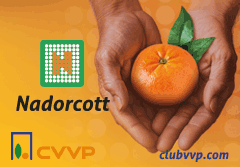In just 3 or 4 hours Reactiva gives the results of a PCR analysis in real time with up to 24 specific pathogens per crop.
Word of mouth has boosted the demand for multi-specific analyses for fungi and plant pathogen bacteria. “They are being requested more and more, particularly for the seedbed sector. If there are any suspicions regarding the seed trays, we are asked for an analysis.” And the fact is that, as Óscar Crespo, Head of the Plant Pathology Department, explains, this tool allows speedy action to be taken in time. In just 3 or 4 hours from the moment the sample arrives at the laboratory, results are obtained. This is a key aspect, because there are pathogens where speed is essential, such as the ones that require a quarantine as they are on the Andalusian Service’s list, such as the case of ToBRFV or CGMVV.
The procedure consists of analysing up to 24 specific pathogens per crop at the same time (cucurbitaceae, solanaceae…) with PCRs in real time. Once the pathogen has been detected, a semi-quantification is made, to determine the amount of genetic material present in the sample being analysed. This step is very important because it shows whether the pathogens can cause the disease or not (if the amount is low, it could mean no treatment is necessary, or only when there are symptoms or conditions that encourage multiplication, for example, an excess of dampness, heat…). The reliability of this system is over 90%. “It is a very specific and extremely sensitive type of analysis, while other techniques, such as ELISA, give more false positive results,” Crespo explains.
Both in the case of seedbeds and in the fields, the most common plant pathogens are fungi of the Fusarium, Alternaria and Pythium genus. In the case of fruit trees, the most frequent problems are associated with Neofabraea, Penicillium, Botrytis, etc. “We have clients from Catalonia and Aragon. In these regions, they are asking for many multi-specific analyses, both of stone and pip fruit. They are looking for the problem to be able to act accordingly and apply treatments that avoid propagation, or prevent it, looking towards future harvests.”
They are also analysing for Xylella fastidiosa, although at present all the analyses have given negative results.
























